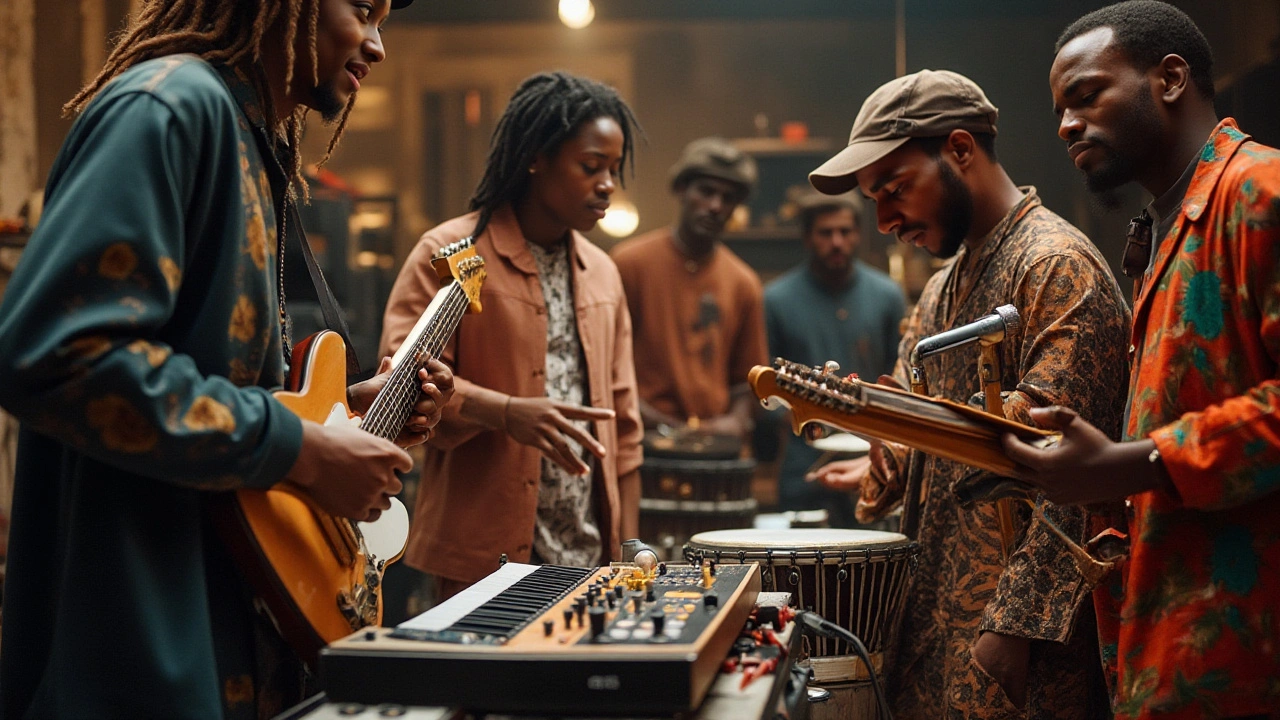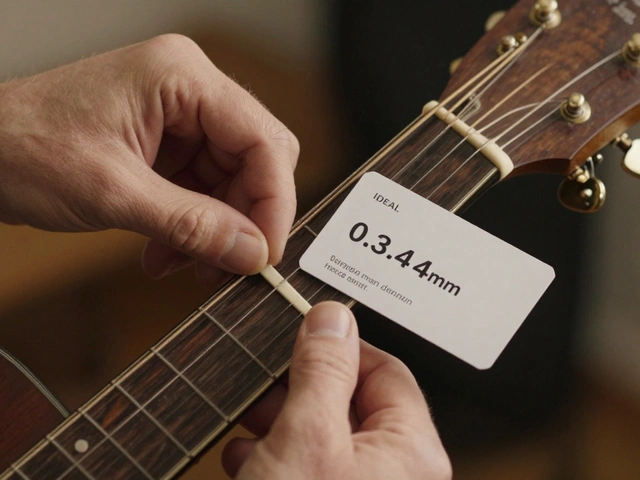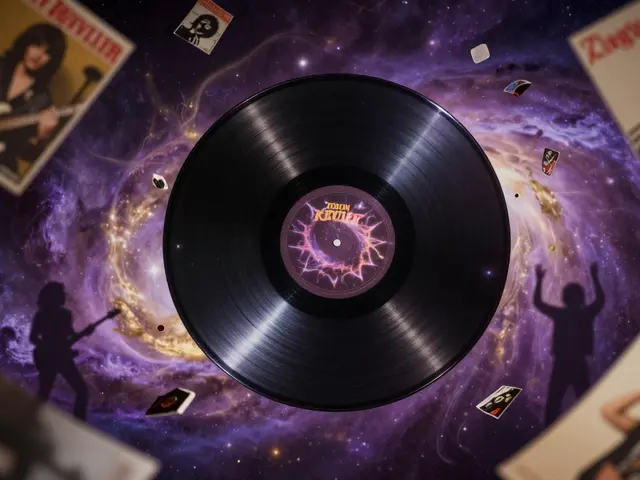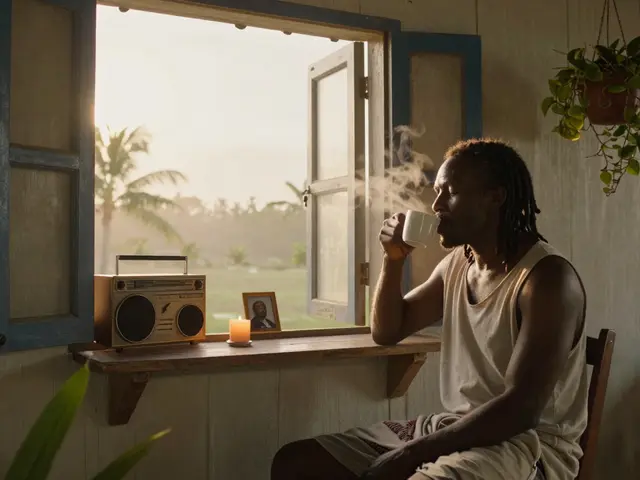In the ever-evolving world of music, pop songs have found a vibrant voice by merging diverse genres into a harmonious tapestry of sound. This innovation is not just a trend; it's a celebration of creativity that bridges traditional boundaries and refreshes our listening experiences. Modern pop artists are fearlessly blending hip-hop’s rhythmic prowess, indie's quirky vibes, and electronic's pulsating energy into their tracks.
Such a fusion takes listeners on a colorful journey through myriad soundscapes where each note tells a part of a global story. It's fascinating to see how this genre-blending reflects the cultural dynamism of today’s society, making pop music a true reflection of our times. As this trend grows, it tugs at our curiosity, inviting us to explore new territories of sound and emotion in every beat.
- The Rise of Genre-Blending in Pop
- Influence of Hip-Hop and R&B
- Incorporation of Electronic and Indie Sounds
- Global Music Impact on Pop
- Creative Processes Behind Genre Fusion
- Future Trends in Pop Music Mixing
The Rise of Genre-Blending in Pop
In recent years, the landscape of pop music has transformed dramatically, moving beyond conventional definitions to become a genre that thrives on diversity and cross-pollination. This shift can be traced back to the increased accessibility of different types of music through streaming platforms, which have provided artists with an expansive library of sounds to explore. As a result, artists began experimenting with merging various styles to craft unique musical expressions that resonate on multiple levels. This approach has not only redefined pop but also reinforced its status as an ever-adapting and inclusive genre.
The evolution of pop music began to gain significant momentum in the early 2000s as artists like OutKast and Kanye West started integrating hip-hop elements with pop. This set the stage for the complete fusion witnessed today. At the same time, collaborations between artists from different backgrounds have become more common, such as Ed Sheeran and Justin Bieber, who brought together influences from folk, pop, and R&B in their hits. It's a movement that celebrates the unity of music cultures, encouraging experimentation and risk-taking in ways that were previously unimaginable.
A striking example of this genre-blending phenomenon is the rise of K-pop. South Korean acts like BTS and BLACKPINK have successfully infused pop with rap, EDM, and even Latin music, showing the world how fusion can create massive appeal across borders. Their influence has inspired Western artists to include more global sounds into their music, driving the beat and rhythm choices that dominate the charts today. A revealing statistic is that over 50% of the top-charting songs in recent years have contained elements from different genres, reflecting the public's diverse taste and increasing openness to new sounds.
"The beauty of pop music lies in its ability to continuously adapt and evolve by incorporating the best elements from its surrounding musical landscape," observes music critic Jon Pareles.
The push towards genre fusion is not merely a superficial trend; it is driven by how artists are being influenced by rapid cultural exchanges made possible through social media platforms. Here, musicians can easily source inspiration from all over the world and connect with international audiences, leading to collaborations that come to life through digital means. As an effect, listeners are treated to songs that not only entertain but also offer fresh perspectives and stories born from different cultural narratives.
Pop music's commitment to blending genres is also reshaping the industry's creative processes. Songwriting camps have become melting pots of ideas where producers and musicians from varied backgrounds collaborate to create standout tracks. This innovation gives rise to chart-topping hits that feel both familiar and excitingly new. As the borders between genres continue to blur, the only rule of creating a pop track is to have no rule at all, making it an exhilarating time for both artists and listeners.
Influence of Hip-Hop and R&B
At the heart of modern pop music's dynamic evolution lies the significant impact of hip-hop and R&B. These genres, once considered niche, have now become pillars of mainstream sound, seamlessly woven into the fabric of pop music. The journey began in the late 20th century when artists started to draw from hip-hop's raw, rhythmic beat and R&B's smooth, melodic soul. This combination opened up a new world of creative possibilities, where rhythms from the streets and rhythms of the heart met in perfect harmony. It's fascinating how hip-hop's storytelling nature complements the emotive essence of R&B, offering listeners a full spectrum of emotional and lyrical depth.
One of the defining characteristics of hip-hop infusion in pop is the use of beats and production techniques that bring a certain vibrancy and raw energy to the tracks. Artists like Post Malone and Drake have perfected this blend, creating hits that resonate across diverse audiences. Drake’s music, for example, has a universal appeal due to his knack for integrating the edgy beats of hip-hop with the smoothness typical of R&B. This synergy allows for versatility not just in sound but also in narrative style, where stories of triumph, love, and resilience play out against beats that dare you not to dance. It's more than just a collaboration; it's an evolution where each genre enhances the other's strengths.
R&B's influence in pop is equally profound. It brings a melodic fluidity and vocal depth that adds layers of richness to pop tracks. Consider the rise of artists like Ariana Grande and The Weeknd, who have taken the soulful flair of R&B and infused it effortlessly into their pop tunes. Grande's vocal runs and smooth transitions are reminiscent of classic R&B, yet her songs carry the upbeat vibrancy that defines pop music. With the blending of these styles, there is an opportunity for pop to be more expansive, inviting listeners into a sonic world that is at once nostalgic and refreshingly new. In blending these genres, artists are not only crafting songs but also crafting new narratives that resonate with contemporary culture.
In an era where music serves as a cultural compass, the fusion of hip-hop and R&B within pop music reflects broader societal trends toward inclusivity and diversity. This musical intersection is a testament to how pop has become a melting pot of global sounds, reflecting varied influences and cultural backgrounds. By embracing the storytelling capabilities of hip-hop and the emotional depth of R&B, pop music has found a way to engage with listeners on multiple levels. These genres have not just influenced the sound of pop but have broadened its appeal, bringing in a wider audience that celebrates the fusion of traditions and benchmarks of contemporary music. This fusion is ongoing, promising us a future where music styles continue to blur and blend.
Occasionally, this blend has produced surprising and delightful outcomes that have pushed pop music to its creative limits. Such was the case in the late 2010s with the unexpected virality of 'Old Town Road' by Lil Nas X, which mixed elements of hip-hop, country, and R&B. It became a cultural phenomenon, showing how genre boundaries are increasingly fluid. Likewise, according to a report from Nielsen Music, genres like hip-hop/R&B have consistently been the most-consumed format in streaming platforms, demonstrating their powerful influence. Such statistics show that the fusion of these genres is not only shaping the sound but also driving the music industry forward, illustrating how eclectic tastes have become among today's listeners.
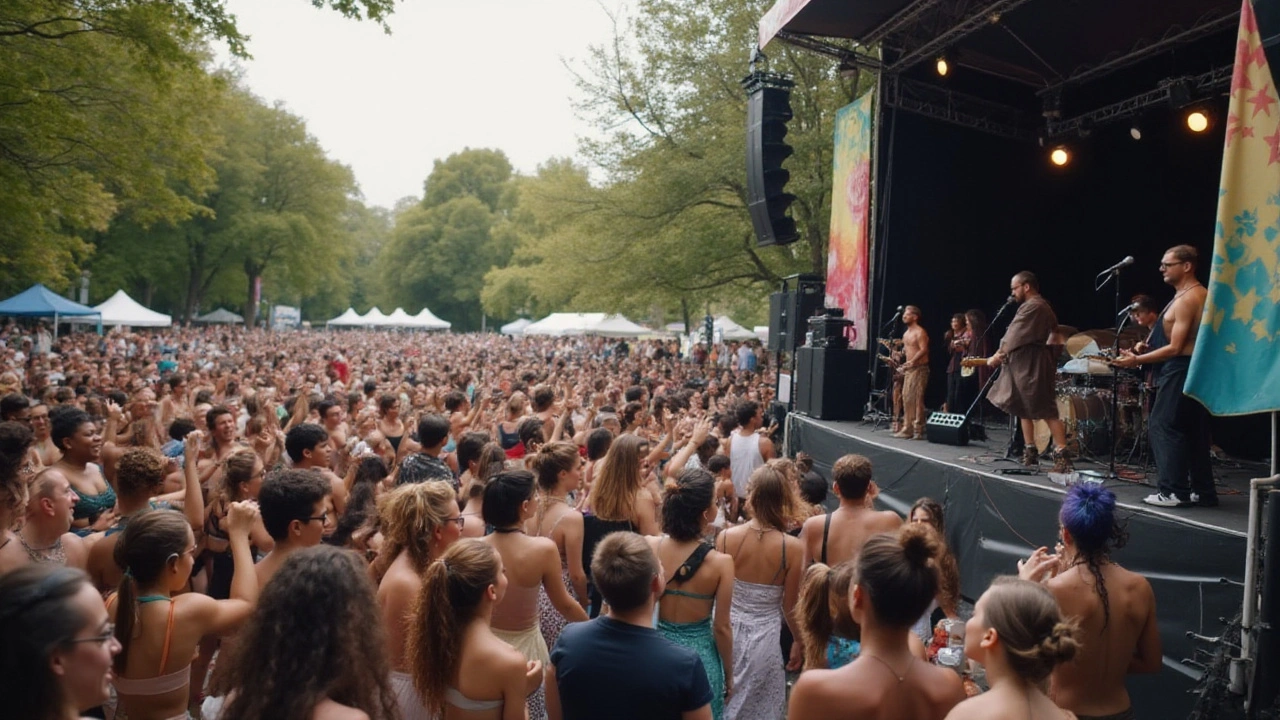
Incorporation of Electronic and Indie Sounds
Pop music's evolution has been driven by the electronic and indie sounds that have steadily seeped into its fabric. This fusion has given rise to a genre that is both refreshingly new and endearingly familiar. The roots of this transformation can be traced back to the early 2010s, when synths and indie elements were first harnessed by artists looking to craft a unique auditory experience. With the likes of artists like Lorde and Tame Impala at the forefront, electronic music's expansive soundscapes and indie's raw authenticity began reshaping pop's landscape.
The appeal of electronic sounds in pop can largely be attributed to their versatility. The genre allows artists to craft atmospheric tracks that can evoke a wide range of emotions. This is evident in hits like "Closer" by The Chainsmokers, where electronic production provided a catchy yet poignant backdrop for the song's lyrics. Meanwhile, indie elements bring a sense of intimacy and storytelling, often seen in the works of artists like Florence and the Machine, who use their music to tell deeply personal stories in a way that resonates with many. The marriage of these two worlds offers listeners a full-bodied experience that traditional pop might not be able to provide on its own.
The blending of these sounds has also impacted live performances. Electronic elements encourage artists to push the boundaries of what a live concert can be, introducing light shows and visual displays that enhance the overall experience. Indie influences counterbalance this with more unplugged, often acoustic sets that create an atmosphere of closeness between the performer and the audience. It’s a practice largely adopted by artists keen on providing intimate shows, much like those seen at indie festivals where the connection between artist and audience is pivotal.
"Music, at its essence, is what gives us memories. And the longer a song has existed in our lives, the more memories we have of it." – Stevie Wonder
Today, the cross-pollination of genres continues to thrive, aided by technological advancements in music production that make it easier for artists to experiment. The burgeoning DIY ethic of the indie scene has been adopted by pop artists, who often work independently to craft their sounds on laptops and home studios. This democratization of music production means that the creative possibilities are nearly endless, and the DIY spirit of indie music is a vital part of pop's future.
Much of this trend is consumer-driven, with audiences craving music that defies conventional genres. With streaming services offering unprecedented access to all types of music, listeners are more likely than ever to have eclectic tastes, which encourages pop artists to draw on a variety of influences to keep their music fresh. This evolution reflects a broader cultural shift towards appreciating diversity in all its forms and signifies an exciting time for music fans everywhere.
Global Music Impact on Pop
Over the years, the infusion of global music into pop music has added a rich layer of diversity and flair that continues to intrigue listeners worldwide. This cultural amalgamation showcases the beauty of fusion, where distinct sounds come together to create captivating music experiences. Latin tones have profoundly influenced popular tracks, incorporating elements like reggaeton rhythms and captivating Spanish guitar melodies. Artists like Rosalía have brought traditional flamenco into the limelight, merging it seamlessly with modern beats and rhythms.
Beyond Latin influences, K-Pop has surged into international prominence, impacting the pop music tableau with its distinct style and massive fanbase. Groups like BTS have played a pivotal role in introducing a wider audience to Korean sounds, showcasing catchy beats alongside meticulous choreography. The song 'Gangnam Style' by Psy, released in 2012, remains an enduring example of Korean music's global reach, topping charts and gathering billions of views online, acting as a trailblazer for other K-Pop artists.
African beats and rhythms have also left a significant mark on today's pop music. The afrobeat genre, with Fela Kuti as one of its pioneers, has been revitalized through the works of artists like Burna Boy and Wizkid, who blend traditional African tunes with contemporary sounds. This combination results in an infectious rhythm that's captured hearts worldwide and seamlessly found a place in pop music.
Traditional Influences in Modern Sound
The impact of world music on pop is amplified by the accessibility of streaming platforms, which facilitate the ease of sharing and discovering diverse music forms. With apps and websites delivering a vast array of music at our fingertips, listeners are more open than ever to experiencing tunes from different cultures. Consequently, pop music reflects this global tapestry, resonating with a universal audience that appreciates authenticity and innovation.
An interesting observation is how collaborations between artists from different countries foster a cross-cultural exchange. A noteworthy example of this is 'Despacito' by Luis Fonsi and Daddy Yankee, which broke numerous records and showcased how Latin pop could captivate a global audience. This collaborative spirit encourages mutual respect and understanding, mirroring an increasingly interconnected world.
As music continues to evolve, the importance of maintaining cultural integrity remains crucial. While blending different styles can lead to groundbreaking musical experiences, it's essential that artists respect the roots of the genres they incorporate. This respect ensures cultural heritage is celebrated, not diluted, offering fans genuine connections to the myriad influences that make up modern pop.
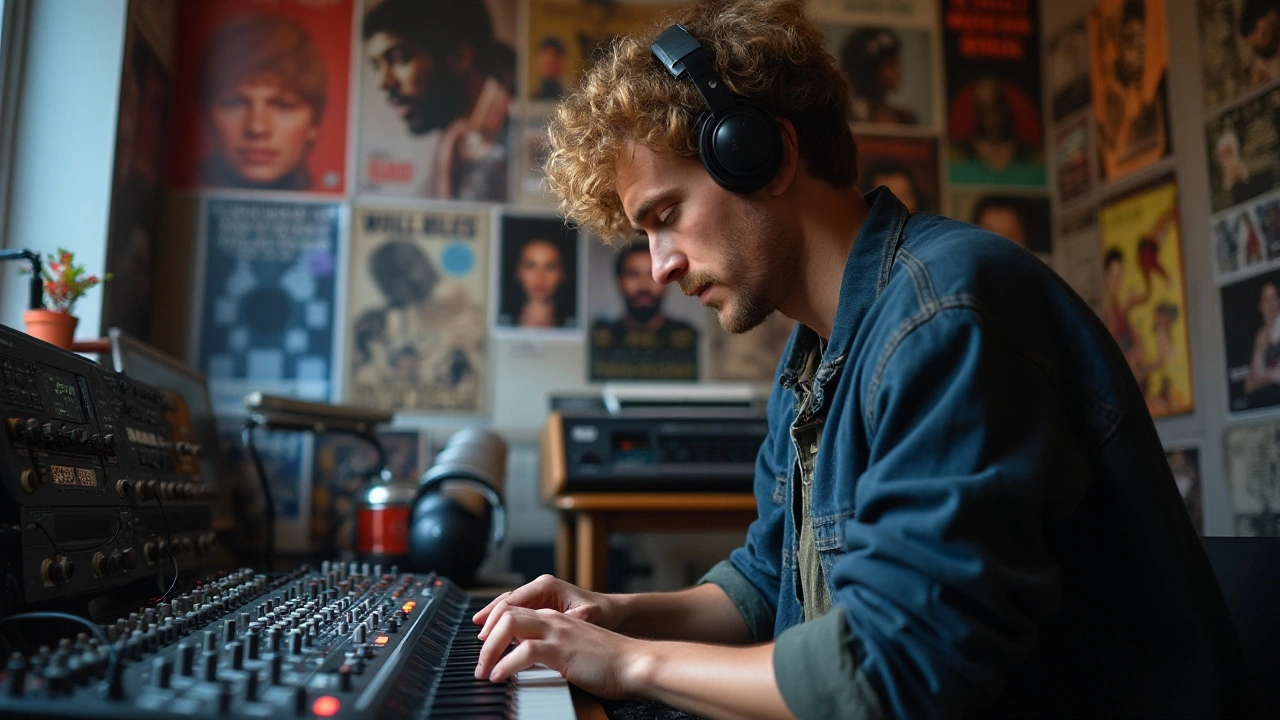
Creative Processes Behind Genre Fusion
Diving into the creative minds of pop music artists reveals a fascinating world where genre fusion comes alive through experimentation and innovation. These musicians often step into the studio with the courage to blend sounds that traditionally stand apart, creating tracks that defy conventional definitions. The first step often involves research, as artists immerse themselves in diverse musical styles, whether it's the infectious beats of hip-hop or the soulful rhythms of R&B. This exploration sometimes involves listening to records from different cultures, taking notes on unique elements like unusual rhythms or distinct instruments, all with an eager curiosity to learn.
The next phase can be likened to cooking without a recipe—it's about feeling and intuition. Artists engage in jam sessions, bringing together various musical influences and trying out different combinations. They might play with a hip-hop beat and overlay it with an indie guitar riff, allowing one element to influence the other in unexpected ways. Success isn't immediate; it's a process of trial and error, guided by an internal compass that steers them toward something uniquely their own. Some of the most striking pop songs are born out of happy accidents in these sessions, where a misplayed note or an improvised lyric suddenly fits perfectly into the sonic puzzle.
Collaboration and Innovation
"The beauty of music today is that there are no rules. Mixing genres isn't just a trend—it's a new palette for creativity, where the only limit is your imagination," says renowned producer Mark Ronson.
Collaboration plays a critical role in genre fusion. Many artists seek out partnerships with musicians from different backgrounds. These collaborations can open new doors, introducing unexpected textures or lyrical themes that may not have been considered otherwise. Recently, Latin rhythms have found their way into pop through such partnerships, offering a fresh vibe that's both exciting and relatable. The exchange of ideas becomes a melting pot, producing sounds that resonate across borders and demographics.
Advancements in technology have also unleashed new opportunities for genre fusion. With modern digital audio workstations, artists can seamlessly integrate samples and loops from various sources, layering them into a cohesive whole. This technology not only facilitates integration but also allows for the transformation of sounds into something new entirely. It's about taking a bass line from a classic rock song, reimagining it with electronic beats, and morphing it into a hit pop anthem that appeals to a wide audience.
The creative journey of mixing genres in contemporary songs is both challenging and rewarding. It reflects an artist's personal growth and mirrors the eclectic, interconnected world we live in. Genre fusion is more than just a musical venture; it's a cultural statement, embracing diversity through the universal language of music. The excitement lies in its unpredictability, as each artist contributes a distinct voice to this dynamic conversation, continually reshaping the landscape of pop music.
Future Trends in Pop Music Mixing
The landscape of pop music is continuously shifting, evolving as artists and producers draw inspiration from an ever-expanding palette of global genres. As we look to the future, this genre fusion promises to delve even deeper, taking pop to unparalleled levels of creativity and innovation. One trend anticipated to gain more traction is the use of Artificial Intelligence (AI) in creating and composing. AI is not about replacing human artistry but enhancing it, offering new ways to mix sounds and generate ideas that may not have been humanly conceivable before.
Technology is playing an increasingly prominent role in shaping the direction of pop music. We're witnessing remarkable advancements in music software that offer almost limitless possibilities for sound creation. Electronic music, with its roots in computer-generated sounds, is becoming more integrated into mainstream tracks, making it likely that future pop hits will feature even more intricate soundscapes designed using sophisticated tools. Producers are now making use of real-time music generation software, allowing spontaneous blends of genres at the touch of a button.
Global Sounds Take Center Stage
The rise of streaming platforms has made it easier for audiences worldwide to access global music, encouraging artists to incorporate diverse sounds into their work. Latin pop and K-Pop have already made waves internationally, setting the stage for more regional styles to enter the global mainstream. As cultural boundaries continue to blur, pop music is likely to embrace even more world music elements, creating unique hybrid tracks that resonate with a broader audience. This not only reflects the interconnectedness of our world but also celebrates a myriad of cultural flavors in a single musical journey.
With collaborations spanning continents becoming the norm, the music industry is seeing some unexpected yet delightful results. These collaborations often bring together artists who infuse their personal and regional influences into a harmonious fusion that might not have existed otherwise. Such partnerships might lead to the creation of never-before-heard sounds that challenge and redefine what pop music can be. A quote from a music expert recently described this phenomenon:
"Pop music is truly becoming a global banquet, where every listener can savor a taste of different cultures in a single song."
Innovation in Artist and Listener Interaction
Beyond just the sound, the interaction between artists and their audiences is expected to evolve, driven by virtual reality and enhanced streaming experiences. These technologies will allow fans to immerse themselves in virtual concerts, offering an experience that blends live music with bespoke visual elements. This trend could revolutionize how pop music is consumed, making listener engagement an integral part of the musical experience. As artists find new ways to connect with their fans, the bond between them is destined to grow stronger, fueling even more creativity and experimentation in pop music.
In sum, the fusion of genres in pop music is not just a passing trend but a dynamic movement poised for exciting growth. With technology, global influences, and deeper artist-audience connections leading the charge, the future of pop music looks incredibly vibrant and promising. As we stand on the brink of this evolving soundscape, one thing is certain: the music that emerges will continue to surprise, inspire, and unite fans across the world in the most unexpected of ways.

